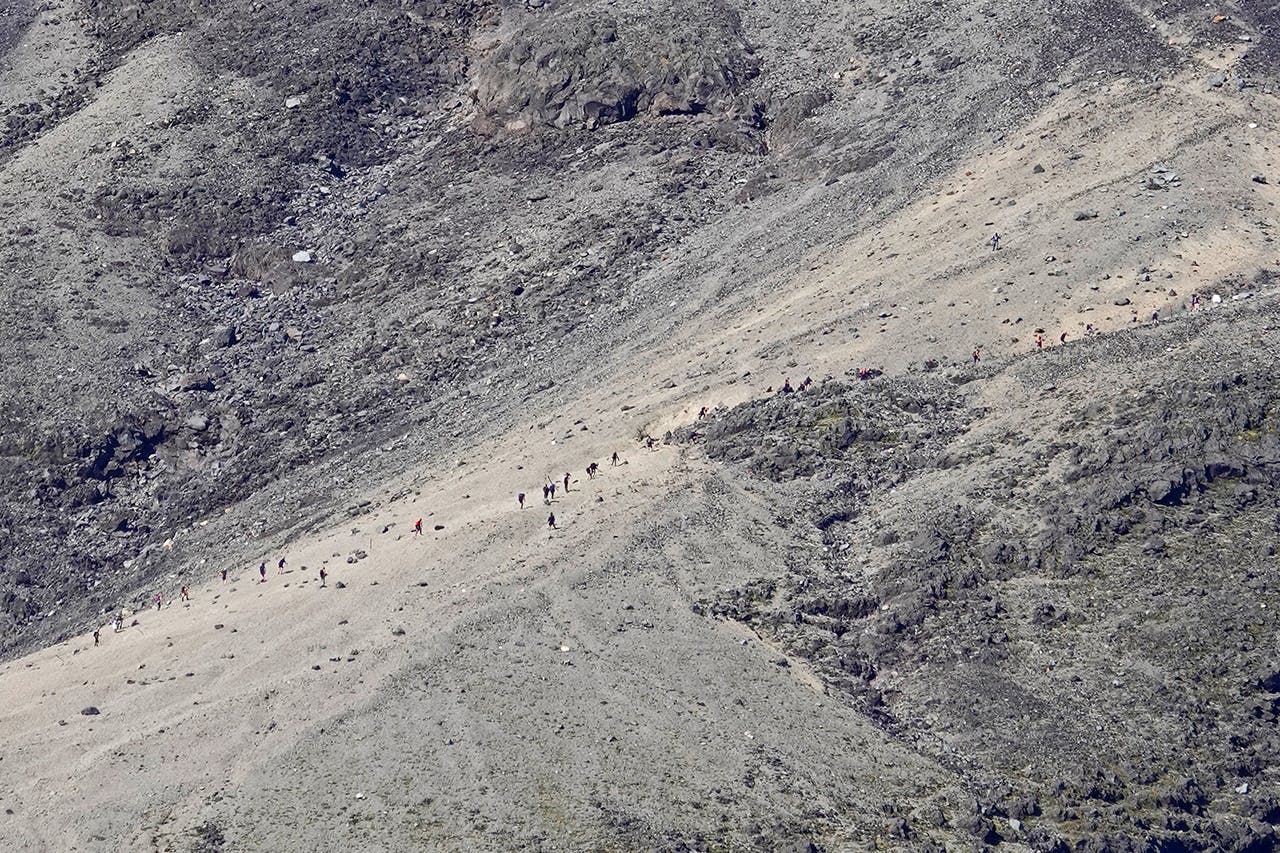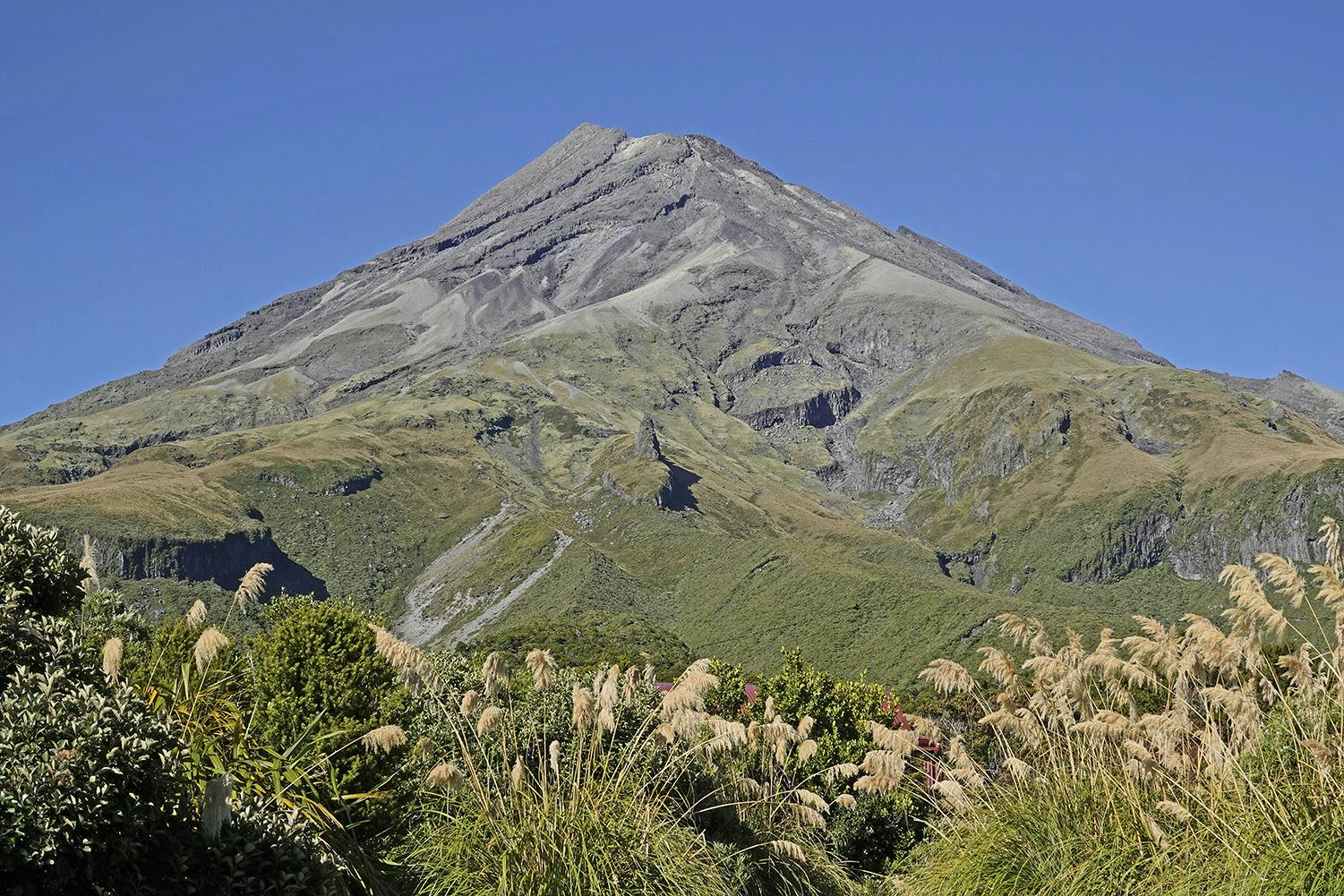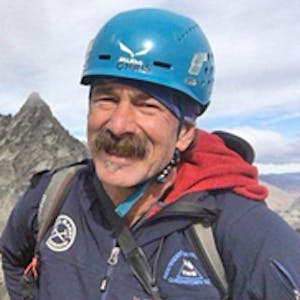Lines of people queuing to reach the summit of Taranaki Mounga rings alarm bells for mountain guide Chris Prudden.
I recently went back to my home town of New Plymouth. The weather was brilliant; fine and clear, a large slow-moving high-pressure system producing back to back clear weather days.
Taranaki, my mounga, beckoned. It’s a spiritual and inspiring place for me. I grew up beneath the lonely peak and ran a mountain guiding business on its slopes for 20 years. By the time I left to further my guiding career in Queenstown, I had climbed the mountain 1320 times.
This time, I drove to North Egmont with a lifelong mate who was keen to check out a route on the north side away from the busy ‘voie normale’ north ridge.
We were shocked to see cars parked along the roadside and struggled to find a place in the car park. I looked up at the peak and a clear line of ‘ants’ were visible forming a line all the way to the crater.
A couple of hundred people at least, I thought. Sure, it was a Saturday and the weather was ideal, but this was in the time of Covid and no foreign tourists.
It’s been great to see Tourism New Zealand promote regional tourism to New Zealanders, but climbing Taranaki is not just an all-comers wander.
The 1500m height gain from the car park to the 2518m summit is a big day out for an average experienced tramper, let alone the many who, I’m sure, have just jumped off the couch for the event.

Part of the line of people estimated at 200 long on the North Ridge. Photo: Chris Prudden.
I have worked on many rescues on Taranaki, when people had failed on the frozen icy surfaces, got caught in the freezing icy winds that blow straight off the Tasman Sea, or simply lost their footing on dry slopes injuring lower limbs or suffering a serious head knock.
After we had ascended the Khyber Pass/Crater valley route alone, we joined the Lizard Ridge at 2100m and encountered the many passing people.
I noticed a few changes since I’d last worked this mountain. A crazy sign asked people to reconsider their summit attempt and listed reasons why they might do so. But immediately beyond the sign, there is a line of warratahs marking the route and drawing hikers on.
I wondered how many of the passing people had a map, a compass, storm gear, extra warm clothing. Clearly many didn’t; their packs were simply too small. They struggled with their footing, exhausted on the downhill wearing street-style gym shoes and talking about water as their supplies had long since run dry.
Most of the people we encountered were inexperienced. Many did not have any extra gear to comfortably wait for assistance if they suffered a simple sprained ankle.
At least it was perfect weather, far from the unforgiving icy slopes and the short cold days of winter.
I gave up being the ‘mountain police‘ many years ago, after getting told where to stick my advice. However, I can reflect on past rescues of injured people during summer and winter and also retrieving bodies.
The reasons most people came unstuck were usually quite simple and the stage had often been set before they set foot on the slopes of the Mounga.
Climbing the mountain is a great experience but it has a formidable injury and death toll usually generated by underestimation of the journey and all it entails and over-estimation of the participant’s skills and knowledge.
To stand on the summit requires one final step but there are thousands of steps in between.
A few general words of advice as an insurance policy and to enhance your day:
- Weather on the Mounga is at best unreliable. Pick a day where the forecast and prevailing conditions are for fair weather for the entire day.
- Heed the weather conditions on the day when you are there if it is different to the forecast.
- Adverse weather can arrive with great speed and ferocity, changing the environment to survival conditions, Cloud can quickly obscure visual navigation.
- As a comparison to your local beach, the average daily temperature at the summit is -2℃, there is 20 per cent more ultraviolet radiation, 30 per cent less oxygen and the average daily wind speed is 40km/h.
- If you are not an experienced alpinist, attempt the climb in the summer months (dry travel to the crater). Wear tramping boots, take plenty of warm clothing (synthetic or wool), wet weather gear, jacket, gloves, warm hat, map and compass, PLB, mobile phone, first aid kit and your usual medication.
- Good health and fitness are required to enjoy this journey.
- Take at least two litres of water as there is no water en route.
- Solo travel is not recommended and you should never split your group. The golden rule is to start as a team, do it as a team and finish as a team. Even if you have to turn around before the summit.







